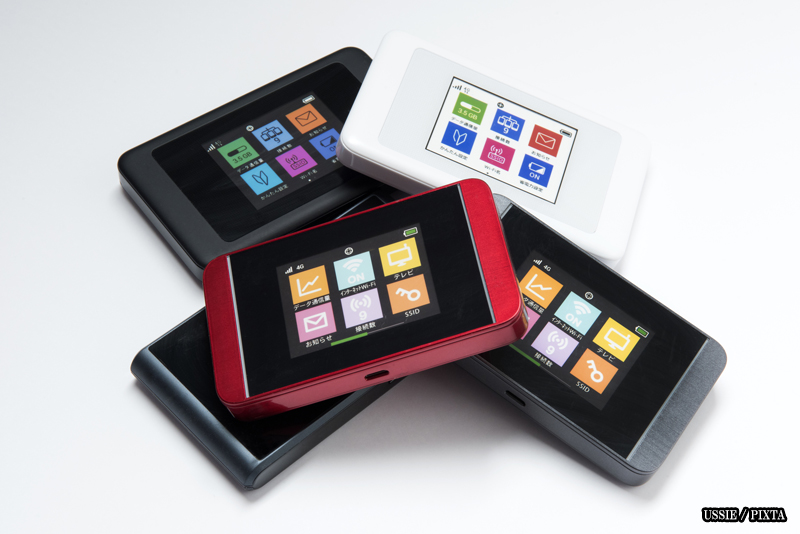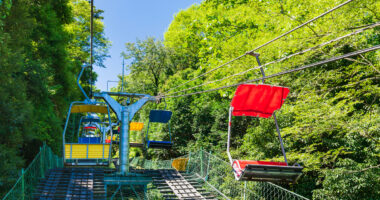- The best eSIM for japan: a complete guide for travelers
- What is eSIM?
- Why use an eSIM in japan?
- How to set up an eSIM
- Best eSIMs in Japan for international tourists
- Top eSIM providers in Japan: speed, pricing, and data plans at a glance
- Comparing the best eSIM plans for Japan: unlimited data vs. pay-as-you-go
- eSIM vs. Pocket WiFi: Is a portable hotspot the better choice?
- What is Pocket WiFi?
- Why do people prefer Pocket WiFi?
- eSIM vs. Pocket WiFi in Japan: Which one should you choose?
- How to switch to eSIM when traveling to Japan?
- Tips for using eSIM in Japan
- Final thoughts
Imagine being stranded in a foreign city, unable to decode the signs or call for help. Or, picture yourself in Tokyo, walking through the famous Shibuya Scramble Crossing—neon signs flashing all around—when suddenly you need directions, a quick translation, or just a way to share the moment.
Without a solid internet connection, you’re stuck. That’s where an eSIM saves the day, giving you instant access to maps, translations, and travel tips the moment you touch down.
In this guide, we’ll break down the best eSIM options, so you can explore with ease and stay connected throughout your trip.
The best eSIM for japan: a complete guide for travelers
Starting from the basics, let’s understand what an eSIM is.
What is eSIM?
An eSIM, or embedded SIM, is a digital SIM card that allows you to activate a cellular plan without needing a physical SIM. It’s built into your phone and can be activated with a QR code or an app. This makes it ideal for travelers who want a hassle-free connection without swapping SIM cards.
For travelers like you, the right eSIM ensures you stay just as connected and in control, whether you’re navigating Tokyo’s metro, booking last-minute reservations in Kyoto, or sharing your adventures in real time. Thus, eSIM helps you travel with confidence.
Why use an eSIM in japan?
When you’re exploring a new country like Japan, reliability is key—an eSIM ensures you stay online wherever your journey takes you. Staying connected has never been easier with an eSIM. Here’s why:
There’s no need to struggle with tiny SIM cards or worry about losing them—just activate your eSIM before you arrive or within minutes of landing. With multiple data plans to choose from, you can find the perfect option for your trip, whether you need just a little data or unlimited browsing. Plus, many eSIM providers offer fast, affordable connections, so you won’t have to deal with sluggish speeds or high costs. Finally, since there’s no plastic waste, it’s an eco-friendly choice, too.
How to set up an eSIM
Setting up an eSIM is easier than learning how to use chopsticks. It is simple and takes only a few minutes. Unlike the traditional way of activating SIM cards, there’s no need to visit a store or swap out physical chips—everything is done digitally. Follow this simple step-by-step guide to set up your eSIM in Japan effortlessly and stay connected without any hassle.
- Step 1: Check Compatibility
Ensure your phone supports eSIM. Most modern iPhones and Android devices do. - Step 2: Choose an eSIM Provider
Pick a plan based on your needs. - Step 3: Purchase and Receive QR Code
Buy your plan online and get a QR code via email. - Step 4: Activate eSIM
Go to your phone settings, scan the QR code, and activate the plan. - Step 5: Start Using Data
Enjoy your fast and affordable data connection in Japan.
Thus, with just a few quick steps, your eSIM will be up and running, ensuring seamless connectivity throughout your Japan adventure.
Best eSIMs in Japan for international tourists

Photo for illustrative purposes
Staying connected while traveling in Japan is essential, whether you need maps for navigation, translation apps for communication, or instant access to travel tips. Here are some top eSIM options for tourists visiting Japan.
Airalo
Airalo is a global eSIM provider that offers some of the most affordable eSIM plans with broad coverage across Japan. Its activation is quick and easy, making it a great choice for travelers on a budget. However, since it provides data-only services, you won’t get a local phone number for calls. It’s ideal for those who primarily rely on internet-based services, like WhatsApp, Google Maps, and email.
Ubigi
Ubigi provides fast speeds at competitive prices and works across multiple countries, making it a solid choice for travelers visiting Japan as part of a larger trip. While it offers great connectivity, the available plans are somewhat limited compared to other providers. If you’re hopping between destinations and need reliable data, Ubigi is a convenient option.
Nomad
Nomad is known for its high-speed internet and flexible plans, catering to travelers who require reliable connectivity. Its customer service is well-rated, making it easier to troubleshoot any issues. However, some of its plans can be on the expensive side. If you prioritize quality and speed over cost, Nomad is a strong contender.
Holafly
Holafly stands out by offering unlimited data plans, so you never have to worry about running out of internet. There’s no need to top up, which makes it a hassle-free option. However, the convenience comes at a price, as Holafly’s plans tend to be more expensive than competitors. It’s best suited for travelers who stream frequently or need constant internet access.
Japan Wireless
Designed specifically for Japan, Japan Wireless provides excellent coverage and dependable service. While its costs are higher than some other options, it’s a great choice for long-term visitors who need stable, country-specific connectivity. If you’re planning an extended stay and want a provider optimized for Japan, this is a reliable option.
Here’s the information in a table format for easy comparison:
| Provider | Pros | Cons | Best for |
|---|---|---|---|
| Airalo | Affordable plans Wide coverage Easy activation | Data-only No phone number for calls | Budget travelers needing a reliable connection |
| Ubigi | Competitive pricing, Fast speeds Works in multiple countries | Limited plan options | Multi-destination travelers |
| Nomad | High-speed internet Flexible plans Good customer service | Some plans can be pricey | Travelers who need reliable speed and service |
| Holafly | Unlimited data No need to top up | Can be expensive | Travelers who stream or need constant internet access |
| Japan Wireless | Tailored for Japan Excellent coverage | Higher costs than competitors | Long-term visitors |
Top eSIM providers in Japan: speed, pricing, and data plans at a glance
Choosing the best eSIM depends on your travel needs, including data usage, budget, and the length of your stay. To make it easier, here is a categorized overview of the top providers offering fast and affordable data in Japan, covering speed, pricing, data plans, and activation methods.
| Provider | Data Packages | Network Speed | Price Range | Activation Method |
|---|---|---|---|---|
| Airalo | 1GB to 20GB | 4G LTE | 5 USD – 50 USD | QR Code/App |
| Ubigi | 500MB to 10GB | 4G LTE | 3 USD – 45 USD | App |
| Nomad | 1GB to 30GB | 4G LTE | 7 USD – 60 USD | QR Code/App |
| Holafly | Unlimited | 4G LTE | 19 USD – 99 USD | QR Code/App |
| eSIM Japan | 1GB to 50GB | 4G LTE/5G | 5 USD – 80 USD | App/Manual |
Comparing the best eSIM plans for Japan: unlimited data vs. pay-as-you-go
When choosing an eSIM plan, you’ll typically find two options:
| Plan Type | Pros | Cons | Best For |
|---|---|---|---|
| Unlimited data | No worries about running out of data | Can be more expensive | Heavy internet users, video streaming |
| Pay-as-you-go | More affordable, only pay for what you use | Risk of running out of data | Casual users, budget travelers |
Let’s make it easier for you! Unlimited data is a great choice if you stream videos, upload content, or use maps frequently. If you only need occasional browsing, a pay-as-you-go plan can save you money.
eSIM vs. Pocket WiFi: Is a portable hotspot the better choice?
Whenever you plan a trip, everyone has advice on staying connected abroad—“Get a local SIM, chase free WiFi, or pay for pricey roaming.” Though, if you’ve heard about “Pocket WiFi,” you might be wondering if it’s the smarter choice over an eSIM. Let’s dive in and explore what Pocket WiFi is and why so many travelers swear by it for a seamless internet experience.
What is Pocket WiFi?

Photo for illustrative purposes
Pocket WiFi is a portable, battery-powered wireless router that provides internet access on the go. It works by connecting to a local mobile network and creating a private WiFi hotspot, allowing multiple devices (like smartphones, tablets, and laptops) to connect simultaneously.
Pocket WiFi is popular among travelers in Japan as it offers unlimited data plans and stable connections, making it a great alternative to SIM cards or eSIMs. However, it requires charging, must be carried around, and often comes with rental fees and return requirements.
Why do people prefer Pocket WiFi?
People prefer Pocket WiFi because it offers unlimited data, allows multiple devices to connect, and provides a stable internet connection. It’s ideal for groups, business travelers, and those who need reliable access for streaming, navigation, or work. Thus, unlike eSIMs, Pocket WiFi works with all devices, regardless of SIM compatibility.
eSIM vs. Pocket WiFi in Japan: Which one should you choose?
Some travelers debate between getting an eSIM or renting a pocket WiFi. The comparison below will help you decide which one is best for you.
| Feature | eSIM | Pocket WiFi |
|---|---|---|
| Setup | Instant, digital | Requires pickup/return |
| Portability | No extra device needed | Extra device to carry |
| Battery life | Uses phone battery | Needs charging |
| Cost | More affordable | Can be expensive |
| Internet speed | High speed | High speed but shared |
So, if you don’t want to carry an extra device and need a hassle-free setup, an eSIM is the better choice.
How to switch to eSIM when traveling to Japan?
If you’re switching from a physical SIM to an eSIM while traveling to Japan, don’t worry and follow these simple steps.
- Step 1: Check carrier support
Open a browser or maps app to check if it works. - Step 2: Back up your physical SIM
Ensure you can reactivate it later if needed. - Step 3: Purchase an eSIM plan
Choose a provider and get the QR code. - Step 4: Activate the eSIM
Scan the QR code and install the plan. - Step 5: Disable physical SIM (optional)
If using only the eSIM, disable the physical SIM in settings. - Step 6: Test your connection
Open a browser or maps app to check if it works.
Tips for using eSIM in Japan
To make the most of your eSIM experience in Japan, a few handy tips can go a long way.
- Download Maps and Apps Beforehand
Google Maps and translation apps work offline, reducing data usage. - Use WiFi When Possible
Many places in Japan offer free WiFi, so save your eSIM data for when you really need it. - Monitor data usage
Some eSIMs have limits, so check your usage in settings. - Restart your phone if needed
If your eSIM isn’t working, a quick restart usually solves the issue.
Final thoughts
Whether you’re lost in the bright lights of Tokyo or wandering the serene streets of Kyoto, staying connected is the key to unlocking Japan’s magic. Without a reliable internet connection, even a simple decision like which train to take can turn into a guessing game. Thus, with the right eSIM, you’ll have instant access to maps, translations, and travel tips, making your journey smooth and stress-free.
Fast, affordable, and easy to set up, it’s a great way to stay connected while traveling in Japan. So, before you pack your bags, choose the right eSIM, set it up, and enjoy Japan like a pro! Safe travels!
Are you ready to experience Japan without limits? Umami bites is here with useful information to make your travels more enoyable, helping you make your experience in Japan truly unforgettable.















